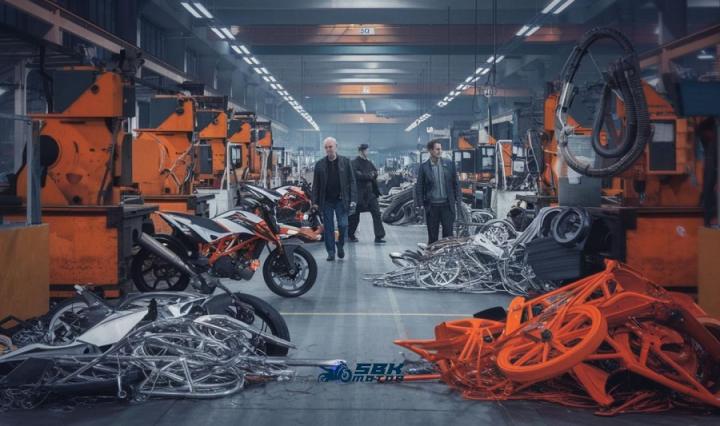

Aprilia RS457 vs KTM RC390 vs Ninja 400 vs 450SR | Comparison of the Best 400 cc Motorcycles
The options for motorcycles that can be ridden with an A2 license have significantly increased, especially this year. CF Moto made the first move with the introduction of the 450SR as a new model, and following suit, the Aprilia RS457 also declared its presence in this market. We present a detailed comparison of these newly introduced models with the long-standing KTM RC390 and Kawasaki Ninja 400, aiming to provide valuable insights for motorcycle enthusiasts and curious individuals. Here is a comprehensive comparison of Aprilia RS457, KTM RC390, Kawasaki Ninja 400, and CF Moto 450SR:

We are comparing the power, cylinder count, crank types, and other features of these 4 motorcycles.
The Aprilia RS457 stands out among these features with its twin-cylinder, liquid-cooled engine, a 270-degree crank angle, and a motor power of 47.5 hp.
The KTM RC390, on the other hand, is a single-cylinder motorcycle with 43.5 hp power and liquid cooling.
The Kawasaki Ninja 400, featuring a twin-cylinder engine, a 180-degree crank angle, 45.4 hp power, and liquid cooling, showcases values that are closely aligned with its counterparts.
The CF Moto 450SR, similar to the Aprilia RS457, is a twin-cylinder motorcycle with a 270-degree crank angle, 46 hp power, and a liquid-cooled engine, demonstrating similar features in this comparison.

If we look at the chassis, suspension, and brake features of the compared 400cc motorcycles:
The Aprilia RS457 comes with an aluminum twin-beam frame, 41mm inverted front forks, a rear monoshock suspension, and a 320mm disc front brake equipped with Bybre 4-piston calipers.
The KTM RC390 features a steel trellis frame, 43mm inverted WP brand front forks, a rear monoshock suspension by WP, and a 320mm disc front brake with Bybre 4-piston calipers.
The Kawasaki Ninja 400 boasts a steel trellis frame, 41mm inverted KYB brand front forks, a rear monoshock suspension by KYB, and a 310mm disc front brake with Nissin 2-piston calipers.
The CF Moto 450SR, on the other hand, stands out in these comparisons with its steel trellis frame, 37mm inverted front forks by KYB, a rear monoshock suspension by KYB, and a 320mm disc front brake equipped with Brembo 4-piston calipers.

When comparing the technological and hardware features of these four motorcycles:
The Aprilia RS457 comes with ABS brakes, an electronic throttle, traction control, and a TFT display as standard features. Quickshifter, however, can be added to the bike for an additional fee.
The KTM RC390 stands out among these four motorcycles with its ABS brakes, electronic throttle, TFT display, and navigation as standard equipment. In addition to the standard features, you can add a quickshifter for an extra cost.
The Kawasaki Ninja 400 lacks any features mentioned for the other motorcycles except for ABS brakes, placing it behind in terms of hardware.
The CF Moto 450SR, with ABS brakes and additional T-BOX for navigation, offers a mid-range set of hardware features, requiring extra investment.

In the comparison of these 4 motorcycles, we encounter distinct features that stand out in each.
The Aprilia RS457 stands out with its performance and next-generation chassis.
The KTM RC390 distinguishes itself with its hardware features and suspensions.
The Kawasaki Ninja 400 excels in terms of price, brand reliability, and post-sales dependability.
The CF Moto 450SR takes the spotlight with its design, aesthetics, and brakes.
All the motorcycles mentioned in this article are excellent alternatives, especially for motorcycle enthusiasts with an A2 license. Considering which features appeal to you more, you can make your choice.
Stay healthy.























































